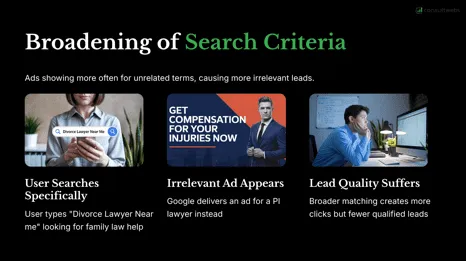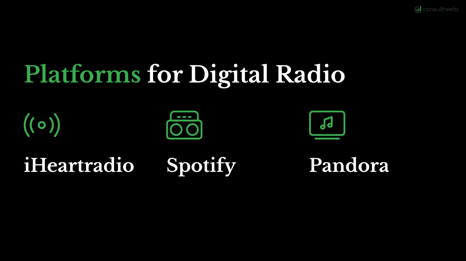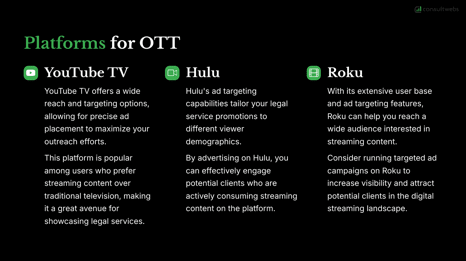Law firms have long relied on Google ad campaigns to generate leads from the internet. But recent changes and shifts in Google’s algorithm have threatened to disrupt what used to be a reliable pipeline of fresh leads. PPC and LSAs are changing–is your law firm prepared?
We’re going to discuss how to weather the storm Google has created in this article. You will learn why diversification is no longer an option (it’s a necessity), how and where to reallocate resources, and how to craft a balanced strategy that doesn’t leave your law firm at the mercy of a single platform.
Recent changes to Google PPC
PPC keyword targeting strategies include:
Broad Match
- New data-driven approaches to target specific audiences based on intent.
- Implementation of negative keywords to refine targeting.
- Utilization of long-tail keywords for more qualified leads.
Phrase Match
- Introduction of AI-powered bidding strategies for enhanced keyword targeting.
- Integration of dynamic search ads to capture unexpected search queries.
- Incorporation of ad extensions to boost ad visibility and click-through rates.
Exact Match
- Optimization of ad copy for exact match queries to improve relevance and Quality Score.
- Testing of different ad formats and CTAs to maximize conversion rates for exact match keywords.
- Continuous monitoring and adjustments to bidding strategies for exact match keywords based on performance metrics.
The Main Change Is That Broad Search Has Become MUCH Broader
With this change, ads show more often for unrelated terms, causing more irrelevant leads.

For example: A user types “Divorce Lawyer Near Me” in search of family law help. Google delivers an ad for a Personal Injury Lawyer instead. The broader matching creates more clicks but fewer qualified leads. And unfortunately, even negative keywords are not a perfect filter. Google may still show ads on semantically related terms or interpret intent differently than we expect.
Claim your Free Law Firm Growth Strategy Session
Recent changes to Google LSAs
There are three major changes that have disrupted Google LSAs.
Change #1 – Automated Dispute Resolution
Automated System Limitations
Google’s automated dispute resolution lacks human oversight. Algorithms make final decisions with minimal appeal options.
Inconsistent Credit Application
Law firms report wildly varying outcomes for similar disputes. Credits seem arbitrary rather than based on clear guidelines.
Credits ≠ Refunds
Credits only apply to future ad spend. Your firm still pays for unqualified leads with no actual money returned.
Change #2 – Lead Rating System
This can send the wrong signals to Google’s algorithm. When Google eliminated the manual dispute function, they added the ability to ‘rate’ leads. They want advertisers to rate every lead that comes in with the hope that the feedback will improve the quality of the leads for all users.
This is problematic in the legal space. For example, if a user searches ‘car accident lawyer near me’ then calls a PI firm but it turns out there were no injuries, that firm is likely to give that lead a poor rating because they don’t want car accidents without injuries. The problem with that rating is that the firm has no idea what search term the user put in to get to their ad, since Google does not share that data in the LSA platform. So, by giving that lead a negative rating, the firm is unknowingly telling Google that they don’t want calls from people who search for a ‘car accident lawyer near me.’
Change #3 – Broadening of Search Criteria
This is the same as the PPC change, but also affects LSAs.
Claim your Free Law Firm Strategy Session
How to Weather the Storm Caused by Google
PPC
- Build out a more robust keyword list to include more variations of the same keyword (AI can help here)
- Restructure your keyword targeting strategy to almost exclusively exact match and some phrase match.
- Know your campaigns and adjust each accordingly based on data. These changes do not affect every campaign the same way.
- Adjust accordingly depending on results (tighten or loosen as needed)
LSA
- Don’t leave the LSA platform altogether. Maintain some visibility and consistent presence.
- Consider temporarily scaling back monthly spend.
- Consider tightening geographic targeting and/or job type targeting.
- Measure results closely week to week. When you start to see improvement and more efficiency, consider reinvesting.
- Continue to secure reviews.
- Realize there is brand value in LSA. For example, showing up multiple times on the first page of Google builds trust and authority in one’s brand.
- Reach out to Google! (Either directly or through your agency to let them know they need to fix this. We’re all in this together!)
Why diversification in advertising matters
Diversifying your advertising efforts across different platforms and channels can help your law firm reach a wider audience and reduce the risk of relying too heavily on one marketing method.
Risks to consider if you are relying too heavily on one platform:
Algorithm Vulnerability
A single algorithm update can devastate visibility and lead generation overnight.
Cost Fluctuations
Platform-specific price surges can drain budgets with little warning.
Account Suspension Risk
Policy violations can halt all marketing efforts while verification issues are resolved.
Limited Audience Reach
Different client demographics prefer varied platforms for seeking legal services.
Benefits a multichannel approach can offer:
Risk Mitigation
Protects against sudden platform changes or account issues.
Expanded Audience Reach
Connects with potential clients across their preferred platforms.
Consistent Lead Generation
Maintains steady client acquisition even when one channel underperforms.
Budget Optimization
Allocates spending to channels delivering the best ROI.
Where else should I allocate resources for my law firm?
Video
Attract clients with engaging videos on YouTube, social media, and streaming platforms.
Benefits
- Targeted Reach
Connect with specific groups looking for legal help.
- Better Engagement
Videos tend to get more traffic than text-only ads.
- Building Trust
Show your expertise and client stories to build credibility.

Audio
Take advantage of the growing popularity of streaming services and podcasts by investing in digital radio advertising. Target listeners based on their interests, demographics, and listening behavior to maximize the effectiveness of your campaigns. Utilize creative audio ad formats with a clear call-to-action to drive engagement and conversions.
Benefits
- Precise Audience Targeting
Reach potential clients based on demographics, interests, and listening behaviors.
- Mobile-First Engagement
Connect with listeners during commutes, workouts, and daily activities.
- Measurable Results
Track impressions, completion rates, and more.
- Voice-Driven Connection
Establish trust through tone and voice that conveys authority and empathy.

OTT
Utilize Over-the-Top (OTT) and streaming TV platforms to reach audiences shifting away from traditional cable television consumption. Incorporating video ads on these platforms can help captivate viewers during their streaming sessions. Consider creating targeted ad campaigns to reach specific demographics based on viewership data provided by these platforms.
Benefits
- Precise Geo-Targeting
Target potential clients in specific jurisdictions where your firm practices. Eliminate wasted ad spend outside your service area.
- Enhanced Brand Recognition
Increase visibility among streaming audiences who rarely see traditional ads. Create memorable impressions during high-engagement viewing moments.
- Advanced Audience Segmentation
Target viewers based on specific legal needs and demographics. Reach potential clients at key decision-making moments.
- Measurable Performance
Track impressions, completion rates, and conversions. Gain actionable insights for campaign optimization.

Building A Balanced Strategy
Google’s shifting landscape has made one thing abundantly clear: law firms can no longer afford to put all their eggs in one basket. The days of relying solely on PPC and LSAs for a steady stream of leads are over.
To survive—and thrive—you need a diversified, data-driven marketing strategy that extends beyond Google’s reach. By learning how and when to reallocate your resources, you not only reduce your vulnerability to algorithm changes but expand your reach and engage potential clients in more meaningful ways.
Consultwebs can help your law firm become more resilient to the storms ahead. To speak one-on-one, book with us here.



